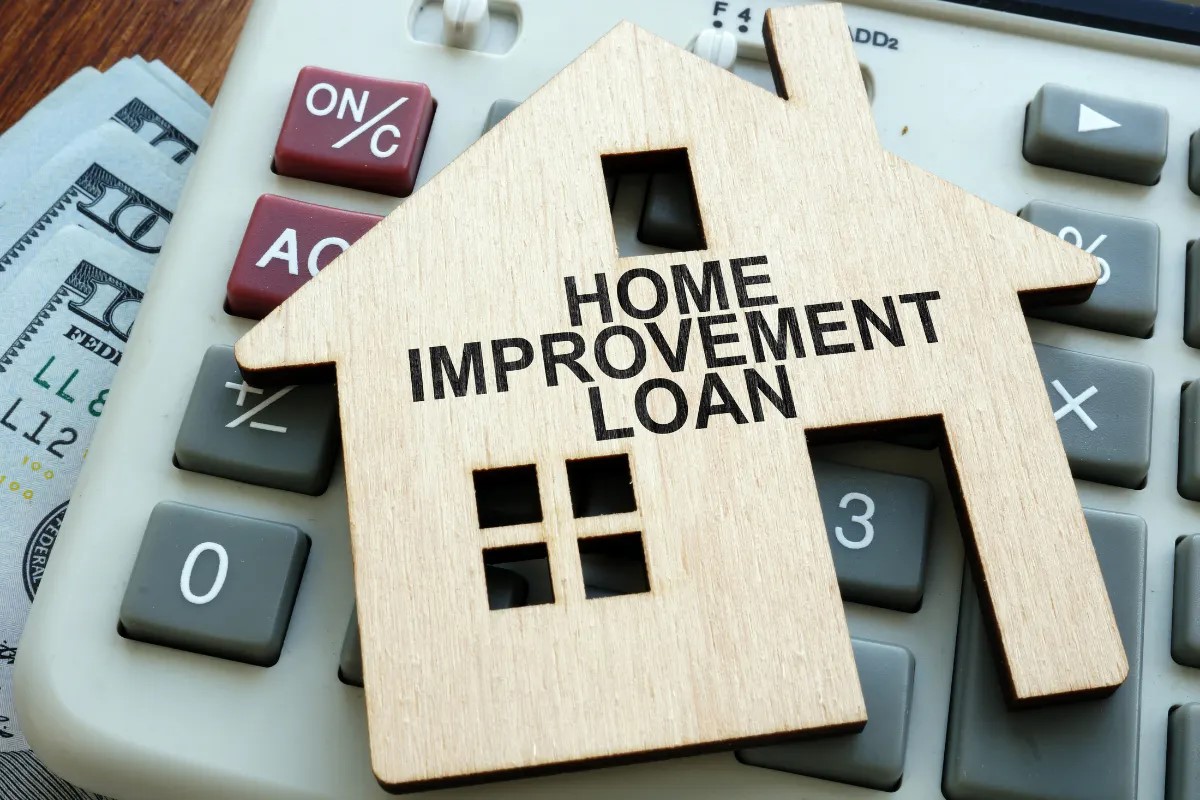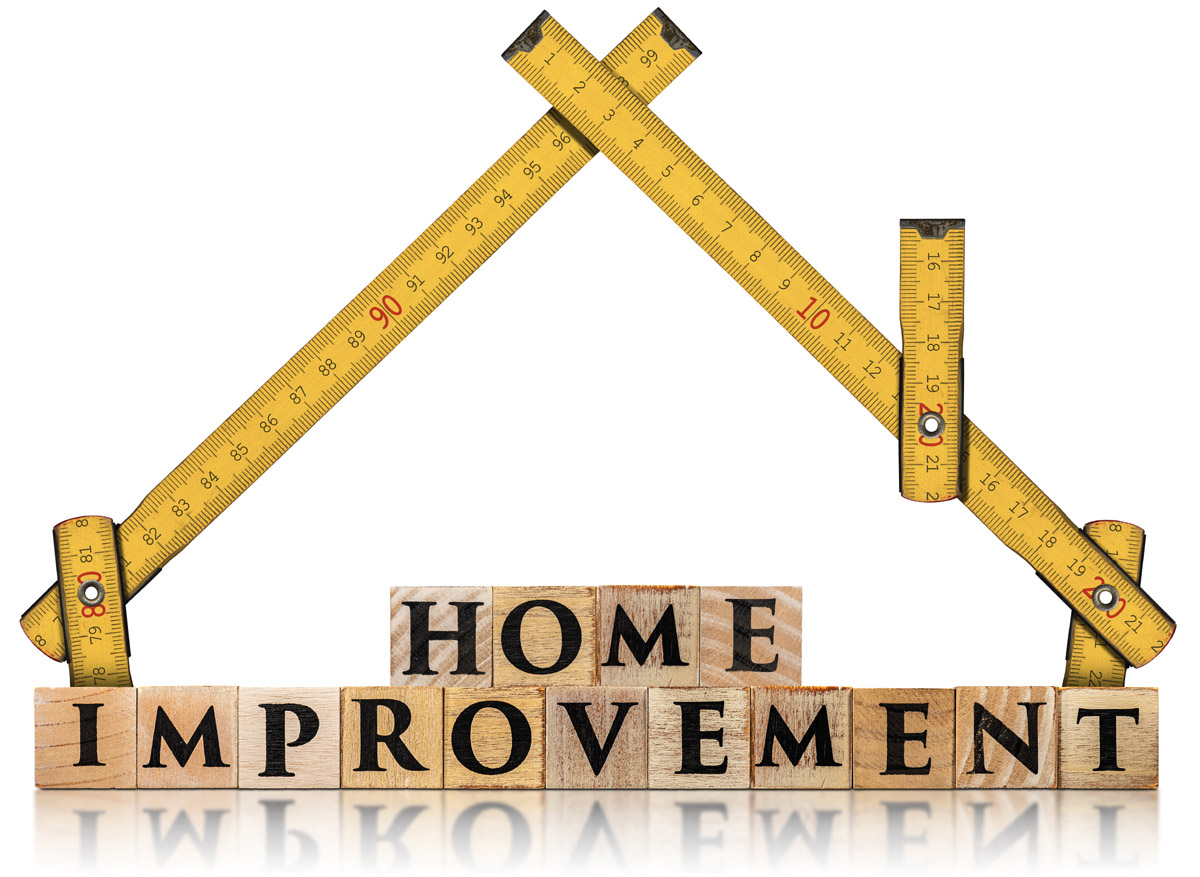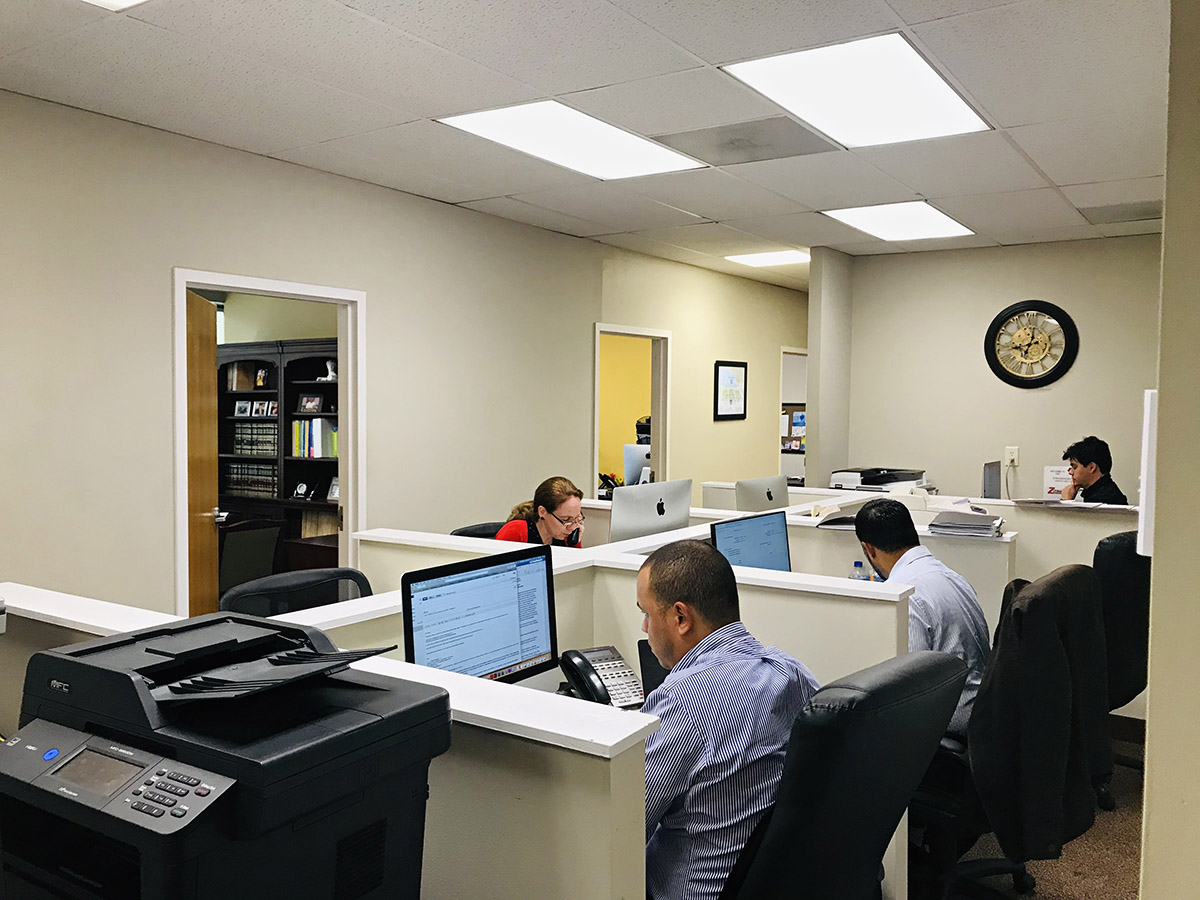Home>Renovation & DIY>Home Renovation Guides>How To Get Money For Home Improvement


Home Renovation Guides
How To Get Money For Home Improvement
Modified: January 9, 2024
Discover expert tips and strategies for funding your home renovation project with our comprehensive home renovation guides. Get the money you need for your home improvement today!
(Many of the links in this article redirect to a specific reviewed product. Your purchase of these products through affiliate links helps to generate commission for Storables.com, at no extra cost. Learn more)
Introduction
Welcome to the ultimate guide on how to secure funding for your home improvement projects. Whether you’re dreaming of a kitchen remodel, bathroom upgrade, or a full home renovation, finding the necessary funds is often the first and most crucial step. In this comprehensive guide, we’ll explore various strategies for obtaining the financial resources needed to turn your home improvement visions into reality.
Embarking on a home improvement project can be an exciting yet daunting endeavor. From identifying the necessary improvements to managing project costs, every step requires careful planning and financial consideration. By understanding the different funding options available and the process of securing funds, you can approach your home improvement projects with confidence and clarity.
Join us as we delve into the world of home improvement financing, from assessing your needs and exploring funding options to researching lenders, applying for funding, and effectively managing your project costs. By the end of this guide, you’ll be equipped with the knowledge and insights to make informed decisions and navigate the funding process with ease.
Key Takeaways:
- Secure funding for home improvements by assessing needs, exploring funding options, and researching lenders. Manage project costs with meticulous expense tracking and proactive contingency planning for a successful renovation experience.
- Understand the financial aspects of home improvement projects, from assessing needs and exploring funding options to managing funds and project costs. Make informed decisions and navigate the funding process with confidence and clarity.
Read more: How To Get Money For Home Renovation
Assessing Your Home Improvement Needs
Before embarking on any home improvement project, it’s crucial to assess your specific needs and prioritize the areas that require attention. Start by conducting a thorough evaluation of your home, taking note of any areas that are in need of repair, renovation, or enhancement. This could include outdated fixtures, deteriorating structures, or inefficient systems that require upgrading.
Once you’ve identified the necessary improvements, it’s time to set a realistic budget for your project. Consider the scope of the renovations, the materials required, and any additional costs such as labor and permits. It’s essential to establish a clear understanding of your financial limitations and determine how much you’re willing and able to invest in your home improvements.
Creating a detailed budget will help you stay on track and make informed decisions throughout the project. Be sure to account for unexpected expenses by including a contingency fund in your budget, allowing for flexibility in case of unforeseen circumstances. By thoroughly assessing your home improvement needs and setting a well-defined budget, you can lay a solid foundation for the funding process and ensure that your project stays on course.
Exploring Funding Options
Once you’ve identified your home improvement needs and established a budget, it’s time to explore the various funding options available to bring your vision to life. From personal savings to specialized financing programs, understanding the pros and cons of each option is essential for making informed decisions.
Personal Savings
Using personal savings to fund home improvements is a common and straightforward approach. By utilizing funds that you’ve set aside, you can avoid incurring debt and interest charges. However, it’s important to assess the impact of withdrawing from your savings and consider the potential loss of interest or investment growth.
Home Equity Loans
Home equity loans, often referred to as second mortgages, allow homeowners to borrow against the equity in their property. These loans typically offer competitive interest rates and fixed repayment terms, making them a favorable option for substantial home improvement projects. However, it’s crucial to carefully evaluate the associated risks, as defaulting on a home equity loan can result in the loss of your home.
Government Grants and Loans
Government programs at the federal, state, or local level may offer grants or low-interest loans for specific types of home improvements, particularly those related to energy efficiency or safety enhancements. Researching available grants and loans can provide valuable financial support for qualifying projects, reducing the overall cost of renovations.
Contractor Financing
Some contractors offer financing options to homeowners, allowing them to spread the cost of home improvements over time. While this can provide convenience and flexibility, it’s essential to thoroughly review the terms and conditions of contractor financing, including interest rates and repayment schedules, to ensure that it aligns with your financial goals.
By exploring these funding options, you can determine the most suitable approach for financing your home improvement projects, taking into account your financial circumstances and the specific requirements of your renovations.
Researching and Comparing Lenders
Once you’ve decided on the type of funding that best suits your home improvement needs, it’s essential to research and compare potential lenders to secure the most favorable terms and rates. Whether you opt for traditional financial institutions or explore online lending platforms, understanding the nuances of each option is crucial for making an informed decision.
Banks and Credit Unions
Traditional banks and credit unions offer a range of loan products, including home improvement loans, home equity lines of credit (HELOCs), and personal loans. These established financial institutions provide a sense of security and stability, often offering competitive interest rates and personalized customer service. When considering banks and credit unions, it’s beneficial to inquire about any existing customer incentives or loyalty programs that could enhance your borrowing experience.
Read more: How To Get On Home Improvement Shows
Online Lenders
Online lending platforms have gained popularity for their convenience and accessibility. These digital lenders often streamline the application and approval process, providing quick access to funds for qualified applicants. Additionally, online lenders may offer competitive rates and flexible terms, making them an attractive option for individuals seeking efficient and tech-savvy borrowing solutions. However, it’s important to research the reputation and credibility of online lenders to ensure a secure and reliable borrowing experience.
Loan Terms and Interest Rates
When comparing lenders, pay close attention to the specific terms and conditions of the loans offered. Consider the repayment period, interest rate structure, and any associated fees or penalties. Understanding the total cost of borrowing, including the annual percentage rate (APR), will enable you to make accurate comparisons and select the most cost-effective financing option for your home improvement project.
By thoroughly researching and comparing lenders, you can identify the most suitable financing partner for your home improvement endeavors, securing the necessary funds with confidence and clarity.
Applying for Funding
With a clear understanding of your home improvement needs and the available funding options, it’s time to initiate the application process to secure the necessary funds. Applying for funding involves gathering essential documents, completing loan applications, and potentially negotiating terms to align with your financial goals and capabilities.
Gathering Necessary Documents
Prior to submitting loan applications, it’s important to gather the required documentation to support your funding request. This may include proof of income, tax returns, bank statements, and details of the planned home improvements. Additionally, be prepared to provide personal identification, such as a driver’s license or passport, as well as any other documentation requested by the lender to assess your creditworthiness and eligibility for the loan.
Read more: How To Get Home Improvement Leads
Completing Loan Applications
When applying for funding, you’ll be required to complete loan applications provided by the chosen lender. It’s crucial to accurately and honestly provide all requested information, ensuring that the details align with the documentation you’ve gathered. Be thorough in your responses, as incomplete or inaccurate information could delay the approval process or affect the lender’s decision regarding your application.
Negotiating Terms
Depending on the type of funding and the lender’s policies, there may be room for negotiation regarding the terms of the loan. This could include discussing the interest rate, repayment schedule, or any associated fees. If you have a strong credit history or valuable collateral, you may be in a position to negotiate more favorable terms. However, it’s important to approach negotiations with a clear understanding of your financial capabilities and the potential impact of the proposed terms on your overall budget and repayment ability.
By diligently completing the application process and, when appropriate, engaging in negotiations, you can position yourself to secure the necessary funding for your home improvement projects, aligning the terms with your financial objectives and ensuring a smooth and transparent borrowing experience.
Managing Funds and Project Costs
Once the funding for your home improvement project has been secured, effective management of the allocated funds and project costs is essential to ensure a successful and financially sound renovation experience. From meticulous expense tracking to proactive contingency planning, managing funds and project costs requires a strategic and disciplined approach.
Tracking Expenses
Establishing a comprehensive system for tracking expenses is paramount to maintaining financial transparency and control throughout the project. Keep detailed records of all expenditures, including material costs, contractor fees, permit expenses, and any unexpected outlays. Utilize spreadsheets, budgeting apps, or dedicated software to organize and monitor your spending, allowing for a clear overview of the financial aspects of the renovation.
Contingency Planning
While a well-defined budget is essential, it’s equally important to incorporate a contingency fund to accommodate unforeseen expenses or potential project adjustments. As a general rule, setting aside 10-20% of the total project cost as a contingency can provide a buffer against unexpected challenges or additional requirements that may arise during the renovation process. By proactively planning for contingencies, you can mitigate financial stress and adapt to evolving project needs without compromising the overall budget.
Staying Within Budget
Adhering to the established budget is a fundamental aspect of effective fund management. Regularly compare actual expenses against the projected budget, identifying any discrepancies and addressing potential oversights or deviations promptly. Communicate openly with contractors and suppliers, seeking cost-effective alternatives if necessary, and making informed decisions to ensure that the project remains within the financial parameters set forth in the initial planning stages.
By diligently tracking expenses, implementing contingency measures, and prioritizing adherence to the established budget, you can effectively manage funds and project costs, fostering a financially prudent and successful home improvement endeavor while minimizing the risk of overspending or financial strain.
Conclusion
Congratulations on reaching the conclusion of this comprehensive guide on securing funding for your home improvement projects. By navigating the intricacies of assessing your needs, exploring funding options, researching lenders, applying for funding, and managing project costs, you’ve gained valuable insights into the strategic and financial aspects of embarking on renovations and enhancements for your home.
Embarking on a home improvement journey is a significant undertaking, and obtaining the necessary funds is a critical initial step. By identifying your specific improvement needs and setting a realistic budget, you’ve laid a solid foundation for the funding process, ensuring that your financial objectives align with the scope of your renovation aspirations.
Exploring the diverse funding options available, including personal savings, home equity loans, government grants, and contractor financing, has provided you with a comprehensive understanding of the financial resources at your disposal. By weighing the benefits and considerations of each option, you can make informed decisions that align with your financial circumstances and renovation requirements.
Researching and comparing lenders has equipped you with the knowledge to identify the most suitable financing partner for your home improvement endeavors, enabling you to secure the necessary funds with favorable terms and rates. Applying for funding, gathering essential documents, completing loan applications, and potentially negotiating terms have positioned you to navigate the borrowing process with confidence and clarity.
As you move forward with your home improvement projects, effective management of funds and project costs will be crucial to ensuring a financially prudent and successful renovation experience. By tracking expenses, implementing contingency measures, and prioritizing adherence to the established budget, you can navigate the financial aspects of your renovations with precision and foresight.
Armed with the knowledge and insights gained from this guide, you are well-prepared to embark on your home improvement journey with confidence, financial acumen, and a clear understanding of the funding process. Whether you’re revamping your kitchen, upgrading your bathroom, or undertaking a comprehensive home renovation, may your endeavors be met with financial prudence, creative fulfillment, and the realization of your dream living space.
Frequently Asked Questions about How To Get Money For Home Improvement
Was this page helpful?
At Storables.com, we guarantee accurate and reliable information. Our content, validated by Expert Board Contributors, is crafted following stringent Editorial Policies. We're committed to providing you with well-researched, expert-backed insights for all your informational needs.












0 thoughts on “How To Get Money For Home Improvement”